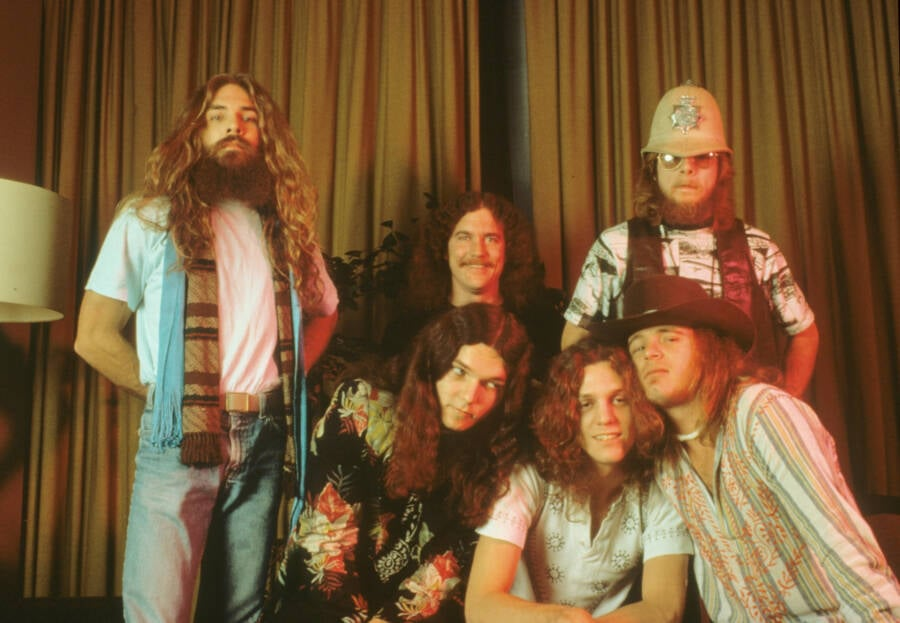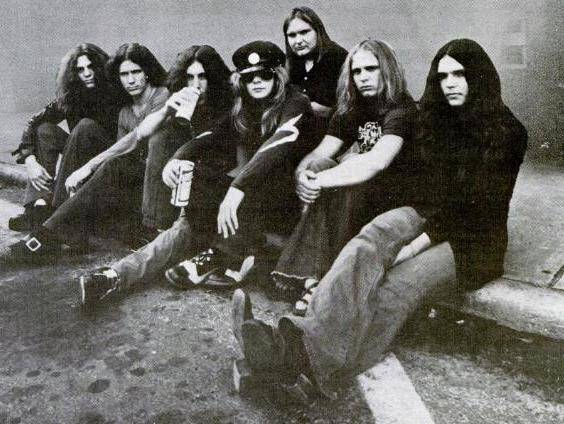The Day the Music Fell from the Sky
October 20, 1977 — a date burned into the history of rock and roll. What began as an ordinary flight for one of America’s most iconic Southern rock bands ended in unimaginable tragedy. The Lynyrd Skynyrd plane crash near Gillsburg, Mississippi, claimed six lives — including lead singer Ronnie Van Zant, guitarist Steve Gaines, and backup vocalist Cassie Gaines. For millions of fans, it was the day the flame of Southern rock dimmed forever.
A Rising Star on a Dangerous Flight
At the height of their fame, Lynyrd Skynyrd had just released their fifth studio album, Street Survivors. The record was a critical success, featuring hits that would become anthems of an era. Yet, just three days after its release, the band climbed aboard a Convair CV-240, an aging aircraft that would never complete its journey.

Bound for Baton Rouge, Louisiana, the band was exhausted but excited. Their tour was going strong, and their energy on stage had never been better. But behind the scenes, there were growing concerns about the plane’s safety. Band members had noticed flames shooting from the right engine during earlier flights — a red flag that could not be ignored.
Backup singer Cassie Gaines had told others she didn’t want to board the plane again. Guitarist Allen Collins reportedly shared her fear. But Ronnie Van Zant, ever the fearless frontman, brushed it off. “If the Lord wants you to die on this plane, when it’s your time, it’s your time,” he said. His words would soon feel eerily prophetic.
The Flight That Should Never Have Taken Off
The Convair took off from Greenville, South Carolina, carrying 24 people — band members, crew, and both pilots. The destination: Baton Rouge. But less than three hours into the flight, disaster loomed. The right engine sputtered, coughed, and began spitting flames once again.
Drummer Artimus Pyle later recalled the growing panic on board. “We knew after the fire shot out of the right engine that we had a problem,” he said. “We thought surely the pilots would land at the closest airport to refuel. But they didn’t. They made fatal decisions.”
Video: Lynyrd Skynyrd Plane Crash: The Devastating True Story
The pilots, trying to stretch what little fuel they had left, realized too late that the tanks were nearly empty. Both engines failed mid-flight. The cabin went silent except for the wind and the sound of fear. The crew told everyone to brace for an emergency landing.
The Final Descent
As the plane lost altitude, it clipped the tops of trees near Gillsburg, Mississippi. The descent turned into chaos. Within seconds, the fuselage shattered upon impact. Survivors later said it felt like being hit “by a thousand baseball bats all at once.”
When the wreckage settled, the night was pierced with screams and cries for help. Ronnie Van Zant, Cassie Gaines, and Steve Gaines were gone. So were both pilots and assistant road manager Dean Kilpatrick. Others lay injured — guitarist Gary Rossington, bassist Leon Wilkeson, keyboardist Billy Powell, and Allen Collins among them.
Pyle, though hurt, managed to crawl from the wreckage and stumble through the swampy woods in search of help. He eventually reached the home of a local farmer, Johnny Mote, who initially mistook him for an intruder. When Pyle collapsed and gasped, “Plane crash,” Mote sprang into action, summoning rescuers who would spend hours pulling survivors from the twisted metal.

Aftermath: The Fire That Never Burned Out
Ironically, there was no explosion. The plane’s fuel tanks were nearly dry, which prevented a post-crash fire. Investigators from the National Transportation Safety Board (NTSB) later determined the cause: fuel exhaustion and crew negligence. The pilots had simply failed to monitor their fuel levels. The right engine, already damaged and inefficient, had burned fuel faster than expected.
Had they stopped to refuel — or diverted course to the nearest airstrip — Lynyrd Skynyrd’s story might have been very different. Instead, tragedy turned one of rock’s brightest rising bands into a legend frozen in time.
The Band That Refused to Die
In the years following the crash, the surviving members grappled with physical pain and emotional trauma. Their injuries were severe, their spirits shattered. For a time, it seemed the name Lynyrd Skynyrd would never grace a stage again.
But ten years later, in 1987, Ronnie’s younger brother Johnny Van Zant stepped up to lead a reformed version of the band. The reunion tour was both a tribute and a resurrection. Fans wept as they sang “Free Bird” once more — a song that now carried an entirely different meaning.
Video : The TERRIFYING Last Minutes of Lynyrd Skynyrd
Over time, Lynyrd Skynyrd rebuilt, continuing to tour and release new music. But no matter how many decades passed, the shadow of that October night in 1977 always lingered. The tragedy had changed them forever.
The Prophecy of Ronnie Van Zant
Those close to Ronnie often spoke of his eerie premonitions. He once told Pyle that he didn’t expect to live past 30 and that he’d “go out with his boots on.” True to his word, Ronnie died at 29 — still leading his band, still on the road, still chasing the music that defined his life.
There’s something haunting about his calm acceptance of fate. For fans, it only deepened the mythology surrounding Lynyrd Skynyrd — a band whose story became inseparable from the themes they sang about: destiny, freedom, and the price of living fast.
A Legacy Written in the Clouds
Today, more than four decades later, the Lynyrd Skynyrd plane crash remains one of the darkest moments in rock history. But it’s also a story of resilience. From the ashes of tragedy came a legacy that refuses to fade. “Sweet Home Alabama” and “Free Bird” still echo through stadiums, car radios, and bars across the world — reminders of a band that refused to be forgotten.

Their music, raw and real, captured the soul of the American South. Their loss reminded the world that even legends are mortal. But the fire that burned in their songs — that wild, untamed energy — still lives on every time a guitar wails through those opening chords of “Free Bird.”
Conclusion: The Sky That Stole a Legend
The 1977 Lynyrd Skynyrd plane crash was more than an accident — it was a turning point in rock history. It silenced voices that had just begun to define a generation. Yet, in a bittersweet way, it immortalized them.
Every time a fan sings along to “Simple Man” or lifts a lighter in tribute to “Free Bird,” the spirit of Ronnie Van Zant and his bandmates flickers back to life. The crash may have ended their journey on earth, but their music continues to fly — eternal, untamed, and free.